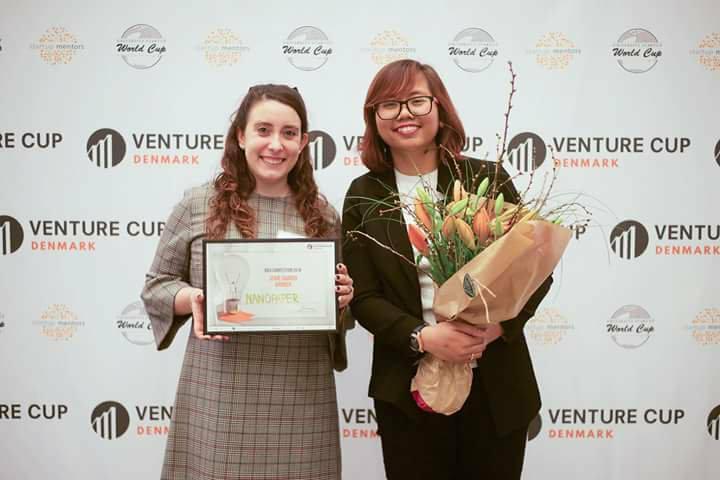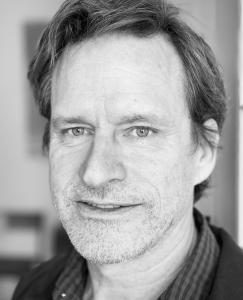Two Danish scientists brew a homemade sugary solution for sustainable plastic recycling that will cut down on waste and help the circular economy
Isabel Alvarez-Martos and Deby Fapyane were friends and fellow researchers at Aarhus University in Denmark who spent a lot of time together, including doing grocery shopping.
Both scientists, they tended to pay more attention to ingredients than most customers did.
Isabel, from Spain, and Deby, from Indonesia, were struck on the quantity of plastic they encountered in everything. This includes toothpaste, which often contains polyethylene, the same material used to make plastic bags.
“Every time you wash your teeth you’re releasing microplastics into the marine environment,” Isabel says. “Seeing how much plastic we use, and that being even more pronounced when you’re buying organic products, we saw a bit of irony behind that. We want to be more sustainable, more natural, and yet we end up using more plastics. So that was the trigger that helped us come up with this idea.”
The idea was to develop a biocellulose material to replace plastics that would be biodegradable and that wouldn’t mean cutting down trees or directly harming the environment.
Deby, a specialist in nanoscience with a background in pharmaceuticals, and Isabel, a chemist, turned their apartments into makeshift laboratories.
“Literally we started in our living rooms,” Isabel says. “Back in the days, we would have a lot of containers and equipment right there.”
They developed a system in which special bacteria would create a kind of cellulose that could replace plastic in things like toothpaste and lotions, in waterproof coatings, and even in fabrics.
Homemade fermentation
In 2018, Isabel and Deby entered Aarhus University’s Dean’s Challenge with their new product and won, and thus Cellugy was born. In three years, the company has grown to eight people and is creating its first pilot plant.

Deby Fapyane and Isabel Alvarez-Martos, founders of Cellugy
Cellugy won first place and €75,000 in the Sustainable Living category in the 2021 Social Innovation Tournament. The contest was created by the EIB Institute to support entrepreneurs who are helping the environment and society. The company has won other awards as well as funding from the European Union’s Horizon 2020 Research and Innovation programme.
There are key differences between Cellugy’s substitute for plastic, which the company calls EcoFLEXY, and that of competitors.
“The most important one from the technology perspective is that we don’t have to extract it from nature,” Isabel says. “We don’t need to extract it from trees or other sources. Instead, we have developed an in-house fermentation technology.”
Using a special strain of bacteria that feeds on sugar, Cellugy can make its product in fermentation tanks, and that means it can be made anywhere and in a variety of factories with existing equipment. The company has partnerships with companies in Spain, Portugal, and Germany.
Taking advantage of surplus sugar
The sugar comes from beets. Isabel says there is more than a million tons of surplus sugar going unsold in Europe each year. She says Cellugy’s bacteria can produce the biocellulose from other sugar sources as well —something that will be necessary as the company grows.
The material created can be used to make water-resistant coatings on paper or cardboard, as an ingredient to replace plastics in cosmetic products, and even as a coating for fabrics, potentially creating an alternative to waterproof parkas and jackets.
Another key advantage: The composition of EcoFlexy makes such combinations into “monomaterials,” meaning that a non-plastic fabric or paper coated with EcoFLEXY can be recycled easily, unlike a piece of cardboard coated with plastic, for example.
Cellugy has big goals. Sustainable coatings for fibre materials comprise a €6 billion market. Cellugy wants to capture 2% of that market by 2026, which would bring in more than €102 million annually.
Cellugy is a small start-up without many resources, so it’s focused on joint development agreements with larger companies that are interested in using EcoFLEXY to replace plastic ingredients.
As a next step, Cellugy is using the prize money from the EIB Institute to create a pilot facility with a 50-litre tank. “If we can ‘win’ at 50 litres, we can easily and exponentially go up by even 10 times, to 500 litres,” says the company’s chief financial officer, Parun Sihombing. “The company hopes to commercialize EcoFLEXY by 2023.”
Cellugy plans to continue innovating.
“We don’t want to stop with, let’s say, the coating for a very specific product,” Isabel says, “because we know we can solve way more problems than that. Our dream for the company is to provide the world more sustainable solutions, so we leave the world a better place for our children.”
